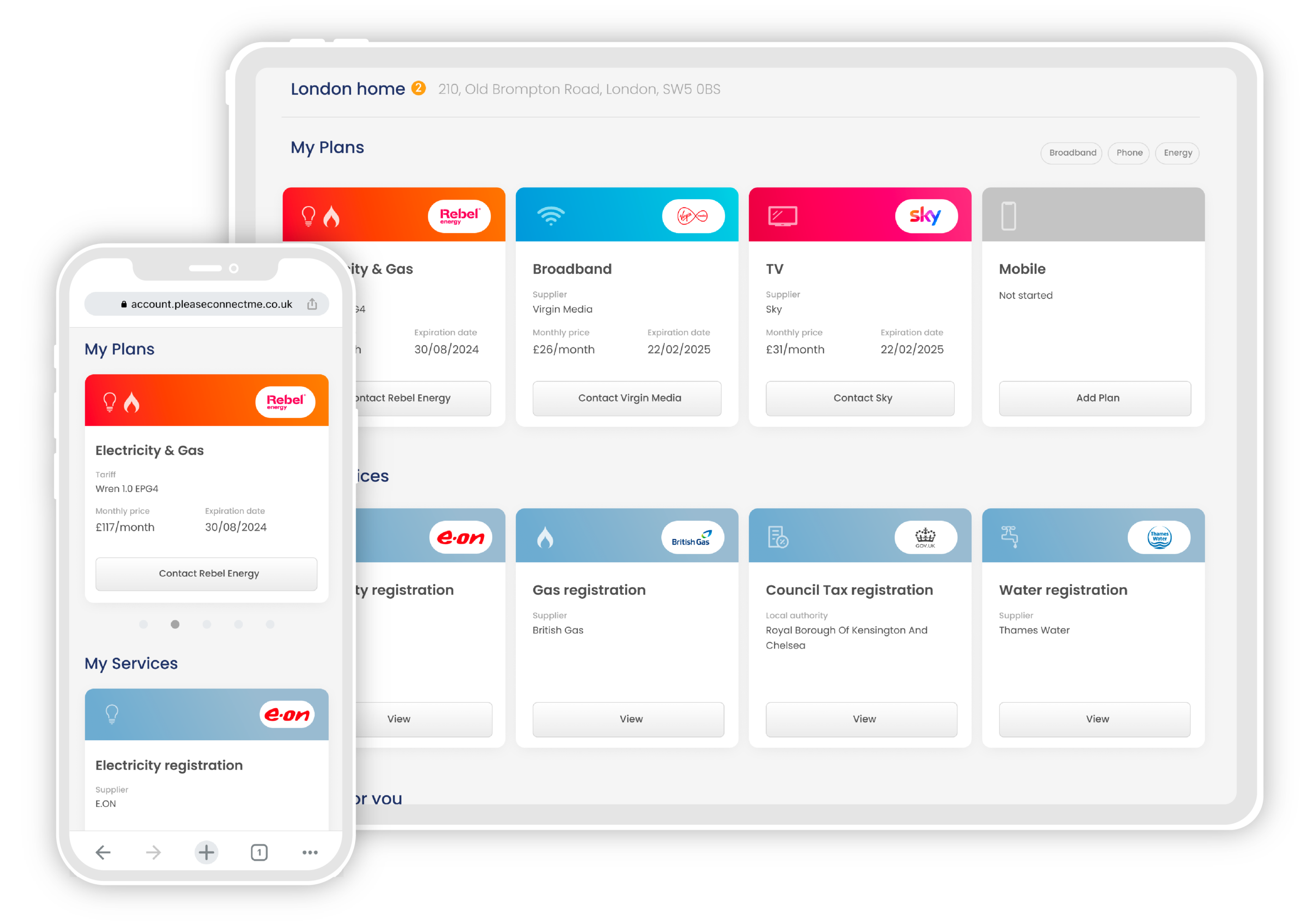The internet is full of gas and electricity-saving tips. In fact, we’ve published an article with more than 100 here that you can try in your home. If you’re looking for the biggest impact on your bills, which energy-efficient changes are most effective?
We’ve taken a look at the eco-friendly household hacks that will save you the most on your gas and electricity bills. Some of them require a big upfront investment while others are completely free.
Overall, we estimate the tips on this page could save busy households more than £500 a year on their energy bills.
Our top 10 gas and electricity-saving tips
#1 Upgrade your boiler
Estimated annual saving: Up to £420 a year
Estimated cost: £3,900 for an A-rated boiler and heating controls
Heating and hot water account for around 60% of a household’s energy expenditure. If you can’t afford a full upgrade, fitting a boiler jacket can save you £40 a year.
#2 Install wall insulation
Estimated annual saving: Up to £320 a year
Estimated cost: £950 – £4,600 depending on the size of your home
Another way to cut your heating bill is to improve your home’s insulation. The cost of installing insulation varies based on the size of your home and what kind of walls you have.
#3 Defrost your freezer
Estimated annual saving: £100 – £200 a year
Estimated cost: Free!
Defrosting your freezer regularly keeps it working efficiently, saving electricity.
#4 Fit aerators on your taps
Estimated annual saving: £150 a year in water and energy costs
Estimated cost: £10- £20 for enough aerators to cover all your taps, but some households can claim them for free.
Aerators reduce the flow of water from taps, so you use less water (and hot water) each time you run the sink.
#5 Install double glazing
Estimated annual saving: Up to £140 a year
Estimated cost: £5,000 – £7,000
Windows are a huge point for heat loss in homes, especially if they’re single-glazed. While installation is expensive, upgrading the thickness of your windows is one of our top gas and electricity-saving tips.
#6 Get a more efficient freezer
Estimated annual saving: Up to £104 a year
Estimated cost: £1,259 for Which?’s top-rated freezer
Opting for more efficient appliances is an easy way to save electricity. You don’t need to upgrade your freezer if it’s working fine, but when it is time to replace it look for an A-rated option.
#7 Turn down your thermostat
Estimated annual saving: Up to £90 a year for each degree you drop the temperature
Estimated cost: Free!
It’s recommended you heat your home to between 18 and 21 degrees Celsius in the winter. Turn your heating down one degree at a time and wear more layers or use blankets to stay cosy.
#8 Install underfloor insulation
Estimated annual saving: Up to £70 a year
Estimated cost: £6,000
Another major home upgrade, but insulating beneath your floors can make a huge difference in cutting your heating bills and keeping your feet warm.
#9 Cut showers to four minutes
Estimated annual saving: Up to £60 a year
Estimated cost: Free!
If you tend to spend time daydreaming in the shower, keeping things short and snappy is an easy way to save energy. Set a timer on your phone, or choose a 4-minute-long song to jam out to.
#10 Switch your bulbs for LEDs
Estimated annual saving: Up to £40 a year
Estimated cost: £180 for a typical household
LED bulbs use less electricity and last longer than traditional bulbs, so they’re a great way to save money at home. You don’t need to switch all your bulbs at once, but as they start dying look at the more efficient options for replacements.
What uses most electricity in a house?
The biggest energy consumers in your house are heating, lighting and major appliances. Perch Energy breaks down the average electricity usage for a house with an electric water heater like so:
- Heating and cooling (45-50%)
- Water heating (12%)
- Lighting (9-12%)
- Refrigerator (8%)
- Washing Machine and Dryer (5%)
- Electric Oven (3%)
- Dishwasher (2%)
- TV and Cable Box (2%)
As you can see, the biggest uses of electricity in the home are heating and lighting. That’s why the most effective electricity-saving tips focus on these areas.
We have lots of tips for making your other major appliances more efficient to run in our complete energy-saving tips guide.
What saves the most electricity at home?
The biggest savings can be found by making major upgrades to the insulation and heating system in your home. However, these upgrades also represent a major upfront cost that you might not see repaid in bill savings over your time in the property.
There are other reasons to make these upgrades beyond just saving on bills. For example, improving the energy efficiency of your home reduces your carbon footprint. Efficient homes are also appealing to buyers, with research showing UK home buyers will pay up to 20% more for a low-carbon property.
Some of the upgrades suggested, like replacing lightbulbs, will need to be done regularly anyway. To maximise your savings and spread the cost, wait until bulbs and appliances need to be replaced anyway, then opt for the most energy-conscious option.
Some of the top electricity-saving tips in the table above don’t cost anything! These are lifestyle changes rather than home upgrades. While you might miss long showers or walking around in a T-shirt in December, these are great options for people looking to save on their bills without a large upfront spend.
Does unplugging an appliance save electricity?
Many household devices will continue to use electricity when plugged in, even if they’re not in use. Devices left on standby mode are estimated to cost UK households £467 million a year in wasted energy.
Games consoles, TVs, Laptops and more will often enter standby mode when you turn them off. They may appear to be off, but they are still using electricity. The same is true of chargers for phones, tablets and other devices. These will continue using electricity even when your battery is full.
Other examples of these so-called ‘vampire devices’ are your microwave, coffee maker or speakers. Anything with an LED screen that stays on will be using electricity continuously.
The easiest way to save energy when it comes to standby mode is to make sure your devices are switched off at the wall. This will prevent any passive energy loss and save you money without requiring any changes to your actual use.
If you’re worried about electricity waste, consider installing a [smart meter]. These handy gadgets tell you how much electricity you’re using in real-time, which helps you spot when it’s being wasted. Most UK energy suppliers will provide you with a free smart meter if you request one.













